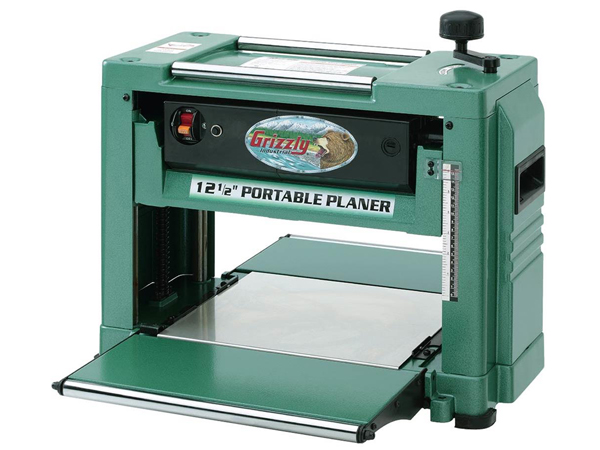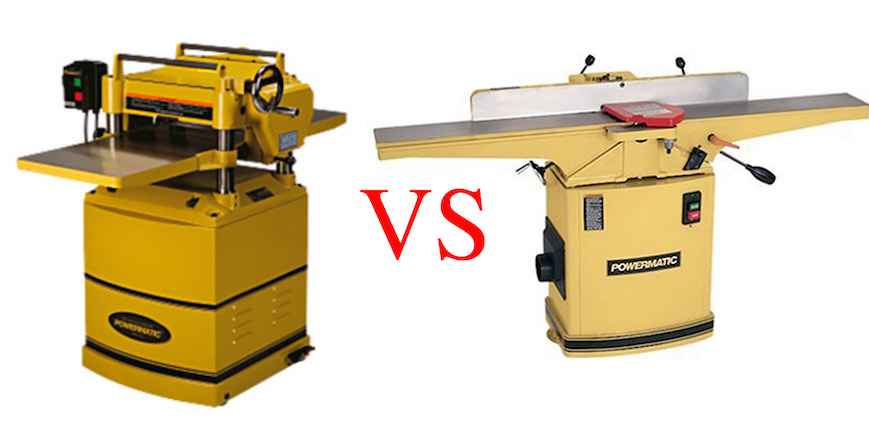Planning to invest in a planer? Wondering if it’s worth the investment? Well, you’ve come to the right place! In this article, we’ll dive deep into the world of planers and explore whether they are truly worth it. So, let’s get started and find out if this tool is a game-changer for your woodworking projects.
Now, you might be asking yourself, “Are planers really worth it?” It’s a valid question, and we’re here to help you find the answer. Whether you’re a seasoned woodworker or just starting out, a planer can make a world of difference in your woodworking journey. But before we reveal the verdict, let’s uncover what makes planers so special.
There’s no denying that planers are fantastic tools with a wide range of benefits. From producing smooth and uniform surfaces to transforming rough lumber into usable boards, planers offer precision, efficiency, and a professional finish. But do these advantages outweigh the cost and maintenance? Let’s find out together!
Are planers worth it? If you’re an avid woodworker or DIY enthusiast, investing in a planer can be a game-changer. Planers offer several benefits, such as smoothing rough lumber, creating precise thickness, and reducing the time and effort required for manual sanding. They also allow for more accurate joinery. With their ability to transform uneven surfaces into smooth and even boards, planers are definitely worth it for those seeking professional-quality results.

Are Planers Worth It? The Ultimate Guide to Making an Informed Decision
Introduction: If you’re a woodworker or a DIY enthusiast, you’ve probably come across the term “planer.” But are planers worth the investment? With their ability to smooth rough boards and thickness wood, planers can be a game-changer in any woodworking project. In this comprehensive guide, we’ll explore the benefits, uses, and considerations of planers to help you determine if they are worth it for your needs.
Benefits of Using a Planer
1. Efficiency: One of the main benefits of using a planer is the time-saving aspect. A planer can quickly and efficiently smooth rough, uneven surfaces or resize lumber to your desired thickness, making it an indispensable tool in any woodworking shop. Instead of spending hours manually sanding or using hand tools, a planer can accomplish the task in a fraction of the time.
2. Versatility: Planers are incredibly versatile, allowing you to work with a wide range of wood species and thicknesses. Whether you’re working on hardwoods, softwoods, plywood, or reclaimed lumber, a planer can handle them all. You can also use a planer to create custom thicknesses for specific projects, giving you greater control over your woodworking outcomes.
3. Precision: Planers provide precise and consistent results, ensuring that every board is the same thickness and perfectly flat. This is especially important when working on projects that require tight tolerances, such as fitting pieces together or creating seamless joints. A planer eliminates the guesswork and ensures that your woodworking project is professional and high-quality.
Factors to Consider Before Buying a Planer
1. Budget: Planers range in price from affordable entry-level models to high-end professional-grade machines. Determine your budget and consider the features and capabilities you need. Investing in a quality planer can yield long-term benefits, but it’s important to find one that fits within your financial constraints.
2. Workspace: Planers can take up a significant amount of space in your workshop. Consider the size and dimensions of the planer you are considering and ensure it will fit comfortably in your workspace. Additionally, factor in the noise levels and dust collection requirements of the planer, as these can affect your overall working environment.
3. Type of Planer: There are various types of planers available, including handheld planers, benchtop planers, and thickness planers. Each type has its own advantages and limitations. Handheld planers offer portability and versatility but may require more skill to achieve consistent results. Benchtop planers are more stable and powerful but require a dedicated space. Thickness planers excel at resizing lumber but are less suitable for intricate shaping tasks.
Planers vs. Other Woodworking Tools: Making the Comparison
While planers offer many advantages, it’s essential to understand how they compare to other woodworking tools. Let’s explore a few key comparisons:
Planer vs. Jointer
A jointer and a planer are different tools that serve different purposes but are often used in conjunction. A jointer is primarily used to flatten and square one face and one edge of a board. On the other hand, a planer is used to make the opposite face parallel to the already jointed face and thickness the board to a consistent dimension. Both tools complement each other and are crucial for achieving flat and smooth surfaces, especially when working with rough lumber.
Planer vs. Hand Tools
Using hand tools like hand planes, chisels, and scrapers can achieve similar results as a planer but with significantly more time and effort. Hand tools require excellent technique, patience, and skill to accomplish the desired outcome. If you enjoy the process and have the time, using hand tools can be a rewarding experience. However, for those looking to streamline their workflow and complete projects efficiently, a planer is a worthwhile investment.
Planer vs. Power Sanders
Power sanders, such as belt sanders and random orbital sanders, are commonly used for surface smoothing. However, they have limitations when it comes to leveling and thickening boards. While sanders are useful for final finishing and achieving a smooth surface, a planer can quickly remove material and ensure a more precise and uniform result, especially when working with larger boards or a significant thickness reduction is needed.
Planer Maintenance and Tips for Optimal Performance
1. Blade Sharpness: A sharp blade is essential for achieving clean and smooth cuts. Regularly check the sharpness of your planer’s blades and replace them when necessary. Dull blades can lead to tear-outs and inconsistent results.
2. Dust Collection: Planing generates a significant amount of sawdust, so it’s crucial to have an effective dust collection system in place. This not only keeps your workspace clean but also ensures that the planer functions optimally without clogging or overheating.
3. Proper Feed Rate: Each planer has its recommended feed rate, which determines how fast a board should be fed into the machine. Follow the manufacturer’s guidelines to ensure smooth operation and prevent damage to the planer or the workpiece.
Conclusion
So, are planers worth it? The answer depends on your specific woodworking needs, budget, and available space. However, considering the efficiency, versatility, and precision that planers offer, they are undoubtedly a valuable addition to any woodworker’s toolkit. Planers can save you time, provide consistent results, and open up a world of possibilities in your woodworking projects. Whether you’re a hobbyist or a professional woodworker, investing in a planer can greatly enhance your woodworking experience and help you achieve the best possible outcomes.
Key Takeaways:
- Planers are a useful tool for smoothing and leveling wood surfaces.
- They can save time and effort compared to manual sanding.
- Planers are worth it if you frequently work with rough lumber or need precise thickness for your projects.
- They can help you achieve professional-looking results in your woodworking projects.
- Investing in a high-quality planer can greatly enhance your woodworking skills and overall efficiency.
Frequently Asked Questions
Are planers worth it?
Looking to invest in a planer but not sure if it’s worth it? We’ve got the answers to your questions! Here are some commonly asked questions about planers and their worth.
1. How can a planer benefit me?
A planer can be a game-changer for anyone who works with wood. It allows you to smooth out rough surfaces, fix uneven edges, and create precise thickness. With a planer, you can transform a piece of lumber into a polished, professional-grade material. Whether you’re a DIY enthusiast or a professional woodworker, a planer can save you time, effort, and frustration.
Not only does it improve the overall appearance of your projects, but it also ensures a uniform thickness that is crucial for many woodworking applications. From crafting furniture to building cabinets, a planer enhances the quality and precision of your work.
2. Can a planer be used for different types of wood?
A planer is versatile and can handle various types of wood, including softwood and hardwood. Whether you’re working with pine, oak, maple, or any other type of wood, a planer can help you achieve the desired results. However, keep in mind that different woods have different grain patterns and densities, which may require adjustments to your planer’s settings.
Be sure to consult the user manual or do some research to understand how to set up your planer correctly for different types of wood. With the right settings, you can achieve smooth and consistent results regardless of the wood you’re working with.
3. Is a planer suitable for beginner woodworkers?
Absolutely! While a planer may seem intimidating at first, it is an excellent tool for beginners. It helps you achieve professional-looking results without the need for advanced woodworking skills. Whether you’re smoothing rough lumber or creating uniform thickness, a planer simplifies the process and saves you valuable time.
However, like any power tool, it’s essential to familiarize yourself with safe operating procedures and understand how the planer works before using it. Take the time to read the user manual, watch instructional videos, and practice on scrap wood to gain confidence and improve your skills.
4. Are planers expensive to maintain?
Planers generally require minimal maintenance. Regular upkeep includes cleaning the machine, keeping the blades sharp, and lubricating moving parts when necessary. These basic maintenance tasks help ensure optimal performance and extend the lifespan of your planer.
While maintenance costs may vary depending on the model and usage, they are generally reasonable compared to the benefits and savings a planer provides. It’s worth investing a little time and effort into the maintenance of your planer to keep it running smoothly for years to come.
5. Can a planer replace other woodworking tools?
A planer is a valuable tool, but it cannot replace all other woodworking tools. It complements other tools in your workshop and serves specific purposes, such as surface preparation and thickness control. However, for tasks like cutting intricate shapes or joinery work, you will still need other tools like a table saw, miter saw, or router.
Ultimately, the combination of different tools allows you to tackle a wide range of woodworking projects efficiently. While a planer is an essential tool in any woodworker’s arsenal, it works best when used in conjunction with other tools that serve different functions.

Tools you DON’T need: Jointer vs Planer vs Drum sander
Summary
So, are planers worth it? Well, it depends on what you’re looking for.
If you love woodworking and want to save time and effort, a planer can be a valuable tool. It helps you smooth rough lumber and create precise dimensions for your projects. However, if you’re a casual DIYer or don’t work with wood often, a planer may not be necessary. It can be expensive and take up space in your workshop. Ultimately, it’s up to you to decide if the benefits outweigh the cost and whether a planer fits your needs.
